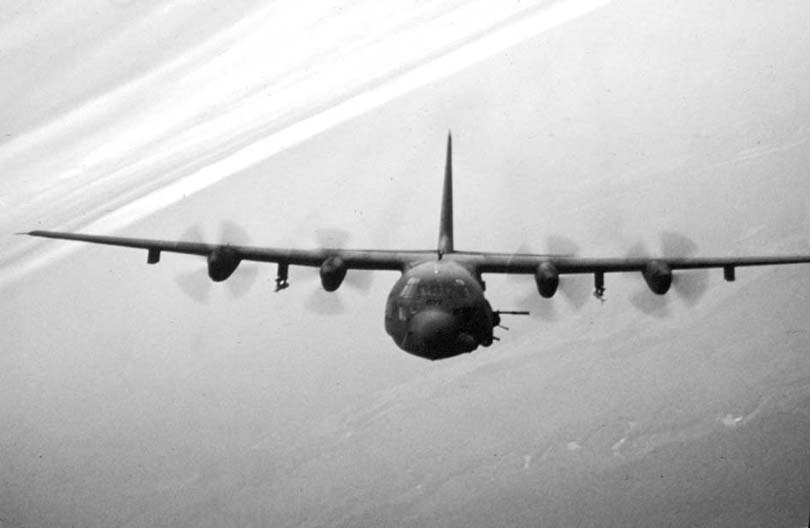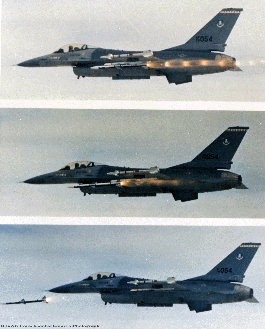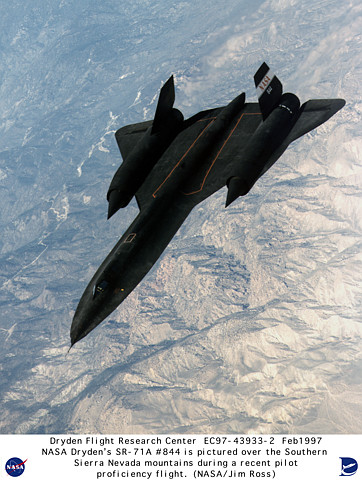- Details
- Written by: Svend Gundestrup
- Category: Aviation
- Hits: 6612
 | |
C-130 Hercules | |
| USAF FACT SHEET 92-34 | |
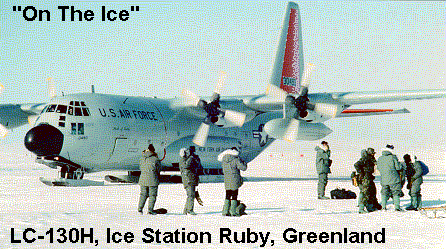 | |
MissionThe C-130 Hercules primarily performs the intratheater portion of the airlift mission. The aircraft is capable of operating from rough, dirt strips and is the prime transport for paradropping troops and equipment into hostile areas. BackgroundFour decades have elapsed since the Air Force issued its original design specification, yet the remarkable C-130 remains in production. The initial production model was the C-130A, with four Allison T56-A-11 or -9 turboprops. A total of 219 were ordered and deliveries began in December 1956. Two DC-130A's (originally GC-130A's) were built as drone launchers/directors, carrying up to four drones on underwing pylons. All special equipment was removable, permitting the aircraft to be used as freighters, assault transports, or ambulances. The C-130B introduced Allison T56-A-7 turboprops and the first of 134 entered Air Force service in April 1959. C-130B's are used in aerial fire fighting missions by Air National Guard and Air Force Reserve units. Six C-130B's were modified in 1961 for snatch recovery of classified U.S. Air Force satellites by the 6593rd Test Squadron at Hickam Air Force Base, Hawaii. FeaturesIn its personnel carrier role, the C-130 can accommodate 92 combat troops or 64 fully equipped paratroops on side-facing seats. For medical evacuations, it carries 74 litter patients and two medical attendants. Paratroopers exit the aircraft through two doors on either side of the aircraft behind the landing-gear fairings. Another exit is off the rear ramp for airdrops. General Characteristics | |
Primary Function: | Intratheater airlift. |
| Contractor: | Lockheed Aeronautical Systems Company. |
| Power Plant: | Four Allison T56-A-15 turboprops; 4,300 horsepower, each engine. |
| Length: | 97 feet, 9 inches (29.3 meters). |
| Height: | 38 feet, 3 inches (11.4 meters). |
| Wingspan: | 132 feet, 7 inches (39.7 meters). |
| Speed: | 374 mph (Mach 0.57) at 20,000 feet (6,060 meters). |
| Ceiling: | 33,000 feet (10,000 meters) with 100,000 pounds (45,000 kilograms) payload. |
| Maximum | Takeoff Weight: 155,000 pounds (69,750 kilograms). |
| Range: | 2,356 miles (2,049 nautical miles) with maximum payload; |
| 2,500 miles (2,174 nautical miles) with 25,000 pounds (11,250 kilograms) cargo | |
| 5,200 miles (4,522 nautical miles) with no cargo. | |
| Unit Cost: | $22.9 million (1992 dollars). |
| Crew | Five (two pilots, a navigator, flight engineer and loadmaster) |
| Load Options | 92 troops or or or |
| 64 paratroops | |
| 74 litter patients | |
| five standard freight pallets. | |
| Date Deployed: | April 1955. |
| Inventory | : Active force, 98; ANG, 20 Bs, 60 E's and 93 H's; Reserve, 606. |
| October 1992 | |
| |
- Details
- Written by: Svend Gundestrup
- Category: Aviation
- Hits: 5992
 | |
F-16 Fighting Falcon | |
| USAF FACT SHEET 92-34 | |
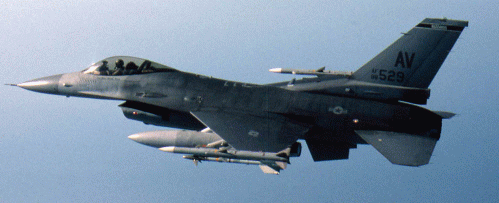 | |
MissionThe F-16 Fighting Falcon is a compact, multirole fighter aircraft. It is highly maneuverable and has proven itself in air-to-air combat and air-to-surface attack. It provides a relatively low-cost, high-performance weapon system for the United States and allied nations.
BackgroundThe F-16A, a single-seat model, first flew in December 1976. The first operational F-16A was delivered in January 1979 to the 388th Tactical Fighter Wing at Hill Air Force Base, Utah. FeaturesIn an air combat role, the F-16's maneuverability and combat radius (distance it can fly to enter air combat, stay, fight and return) exceed that of all potential threat fighter aircraft. It can locate targets in all weather conditions and detect low flying aircraft in radar ground clutter. In an air-to-surface role, the F-16 can fly more than 500 miles (860 kilometers), deliver its weapons with superior accuracy, defend itself against enemy aircraft, and return to its starting point. An all-weather capability allows it to accurately deliver ordnance during non-visual bombing conditions. General Characteristics
| |
Primary Function: | Multirole fighter. |
| Contractor: | Lockheed Martin Corp. |
| Power Plant: | F-16C/D: one Pratt and Whitney F100-PW-200/220/229 or General Electric F110-GE-100/129 |
| Thrust: | F-16C/D, 27,000 pounds(12,150 kilograms) |
| Length: | 49 feet, 5 inches (14.8 meters) |
| Height: | 16 feet (4.8 meters) |
| Wingspan: | 32 feet, 8 inches (9.8 meters) |
| Speed: | 1,500 mph (Mach 2 at altitude) |
| Ceiling: | Above 50,000 feet (15 kilometers) |
| Maximum | Takeoff Weight: 37,500 pounds (16,875 kilograms) |
| Range: | More than 2,000 miles ferry range (1,740 nautical miles) |
| Armament | One M-61A1 20mm multibarrel cannon with 500 rounds; external stations can carry up to six air-to-air missiles, conventional air-to-air and air-to-surface munitions and electronic countermeasure pods. |
| Unit Cost: | F-16C/D, $20 million plus |
| Crew | F-16C: one; F-16D: one or two |
| Load Options | 92 troops or or or |
| 64 paratroops | |
| 74 litter patients | |
| five standard freight pallets. | |
| Date Deployed: | January 1979 |
| Inventory | Active force, 444; Air National Guard, 305; Reserve, 60 |
| June 1997 | |
| |
- Details
- Written by: Svend Gundestrup
- Category: Aviation
- Hits: 6200
 | |||||||||||||||||||||||||||||||||||||||||
SR-71 Blackbird | |||||||||||||||||||||||||||||||||||||||||
| USAF FACT SHEET 92-34 | |||||||||||||||||||||||||||||||||||||||||
My opinion: The first time I ever saw this plane, I was lost. It was big, black, fast, and a record breaker. Could you ask for more? I couldn't. | |||||||||||||||||||||||||||||||||||||||||
MissionShort and sweet: Fly for 8 hours, and spy on the enemy, at Mach 3, at an altitude, where missiles and no other plane would be able to intercept it.
BackgroundOriginally designated SR-71, the Skunk Works was forced to change about 29,000 blueprints to SR-71 when Lyndon Johnson accidentally turned the letters around during his 1964 announcement acknowledging the existence of the airplane. Features
This chart "borrowed" from John Stone's Lockheed Blackbird Information As of January 1st, 1997, two SR-71 air crews and planes were declared mission ready for the first time since the plane's retirement, seven years ago. In 1994, Congress appropriated funds to put two aircraft back into service, and these airplanes were taken out of storage, refurbished, and delivered to the USAF. (One was located at NASA's Dryden research facility and the other at the Skunk Works.) These two Blackbirds and their crews are now based at Edwards Air Force Base, though administratively, they are part of the 9th Recon Wing at Beale. These SR-71s are equipped with reconnaissance sensors, including the Advanced Synthetic Aperture Radar system that provides near real-time, all-weather, day or night imagery. "My goal was to bring the SR-71 back quickly, within budget, and most importantly, in a safe manner," said Brig. Gen. Robert Behler, 9th Reconnaissance Wing commander at Beale. "I'm proud to say we've accomplished this goal and we look forward to demonstrating a mobility capability later this year." Remember that A-10 Thunderbolt that crashed into a Colorado mountain in April? Well, guess what two planes were involved in the search . . . General Characteristics
| |||||||||||||||||||||||||||||||||||||||||
Primary Function: | Spyplane | ||||||||||||||||||||||||||||||||||||||||
| Contractor: | Lockheed Aeronautical Systems Company. | ||||||||||||||||||||||||||||||||||||||||
| Power Plant: | |||||||||||||||||||||||||||||||||||||||||
| Length: | |||||||||||||||||||||||||||||||||||||||||
| Height: | |||||||||||||||||||||||||||||||||||||||||
| Wingspan: | |||||||||||||||||||||||||||||||||||||||||
| Speed: | Mach 3,5 | ||||||||||||||||||||||||||||||||||||||||
| Ceiling: | 100.000+ | ||||||||||||||||||||||||||||||||||||||||
| Maximum | |||||||||||||||||||||||||||||||||||||||||
| Range: | |||||||||||||||||||||||||||||||||||||||||
| Unit Cost: | |||||||||||||||||||||||||||||||||||||||||
| Crew | 2 | ||||||||||||||||||||||||||||||||||||||||
| Load Options | |||||||||||||||||||||||||||||||||||||||||
| Date Deployed: | |||||||||||||||||||||||||||||||||||||||||
| Inventory | |||||||||||||||||||||||||||||||||||||||||
| |||||||||||||||||||||||||||||||||||||||||

